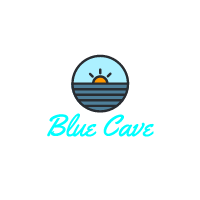The blue hue in the Blue Lagoon is caused by the reflection and refraction of sunlight on the limestone and algae in the water.
Why doesn’t the lagoon glow in other colors?
The specific composition of the limestone and algae, combined with the clarity of the water, results in the distinctive blue color rather than other colors.
Does the intensity of the blue glow change throughout the day?
Yes, the intensity of the blue glow changes with the position of the sun, being brightest when sunlight directly enters the lagoon.
Can the blue glow be seen throughout the year?
The blue glow can be seen year-round, but it is most pronounced on sunny days.
Does weather affect the blue glow in the lagoon?
Yes, cloudy or stormy weather can reduce the intensity of the blue glow due to less direct sunlight entering the lagoon.
Split, Croatia, The Blue Lagoon, The Blue Cave & more!
Does the blue glow occur in other lagoons or bodies of water?
Similar blue glows can occur in other bodies of water with similar conditions, but the Blue Lagoon’s glow is particularly unique due to its specific geological and environmental characteristics.
Why does the water also appear blue in the lagoon?
The water appears blue due to the way light is absorbed and scattered by the water molecules and the reflection from the limestone floor.
Why isn’t the blue glow visible from the lagoon’s entrance?
The blue glow is most visible inside the lagoon where sunlight interacts directly with the water and limestone; it may not be as visible from the entrance due to different angles of light.
Can the blue light be captured in photographs?
Yes, the blue light can be captured in photographs, especially with the right settings and lighting conditions.
Can humans influence the blue glow in the lagoon?
Human activities, such as pollution or excessive tourism, could potentially impact the clarity of the water and the intensity of the blue glow.
Does the blue glow look the same to all visitors?
The blue glow generally looks similar to all visitors, but individual perceptions may vary slightly due to differences in vision and the angle of view.
Are there any legends or myths related to the blue glow?
Local legends may include stories about the mystical properties of the lagoon and its enchanting blue glow, often passed down through generations.
Has the blue glow been studied scientifically?
Yes, scientists have studied the blue glow to understand the optical properties of the water, limestone, and algae that contribute to this phenomenon.
Can other sources of light create a similar glow in the lagoon?
Natural sunlight is the primary source of the blue glow, but artificial lights might not replicate the same effect due to different wavelengths and intensities.
How does the blue glow of the Blue Lagoon compare to the blue grotto in Capri, Italy?
Both the Blue Lagoon and the Blue Grotto in Capri exhibit similar blue glows due to sunlight reflecting off the limestone, but each has unique characteristics based on their specific locations.
Are there best practices to follow for photographers wanting to capture the blue glow?
Photographers should use natural light, avoid flash, and experiment with different angles and camera settings to capture the best images of the blue glow.
Has the blue glow changed over the years?
The blue glow has remained relatively consistent, though environmental changes could potentially affect its intensity.
Can I touch the water in the lagoon?
Yes, you can touch the water, but it’s important to be mindful of preserving the natural environment.
Does the blue glow affect marine life in the lagoon?
The blue glow itself does not negatively affect marine life, but maintaining water quality is crucial for their health.
Is the Blue Lagoon the only lagoon in the world with a blue glow?
The Blue Lagoon is one of the few lagoons with a pronounced blue glow, but similar phenomena can be found in other locations with similar conditions.
Are there specific times when the blue glow is not visible?
The blue glow may be less visible during cloudy weather, early morning, late afternoon, or nighttime when there is no direct sunlight.
Does the blue glow look different from the outside and the inside of the lagoon?
Yes, the blue glow is more intense and vivid when viewed from inside the lagoon due to direct light interaction.
Does the depth of the water affect the blue glow?
Yes, the depth and clarity of the water can influence the intensity and appearance of the blue glow.
Can the blue glow be seen from a distance?
The blue glow is most visible up close inside the lagoon; from a distance, it might not be as noticeable.
Does the blue glow affect the temperature inside the lagoon?
The blue glow itself does not affect the temperature, but sunlight can slightly warm the water during the day.
